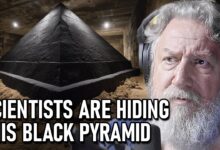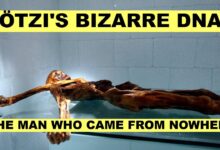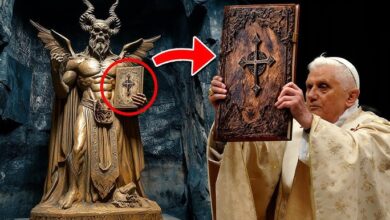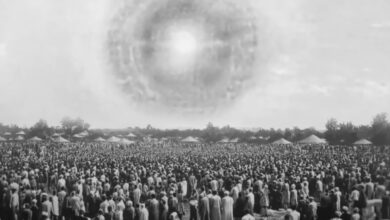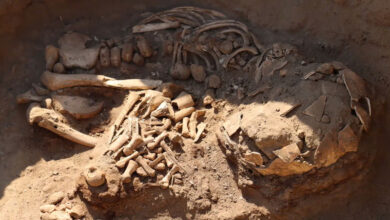Israel’s Levite Priests Are Training for The Third Temple! The Second Coming is Near
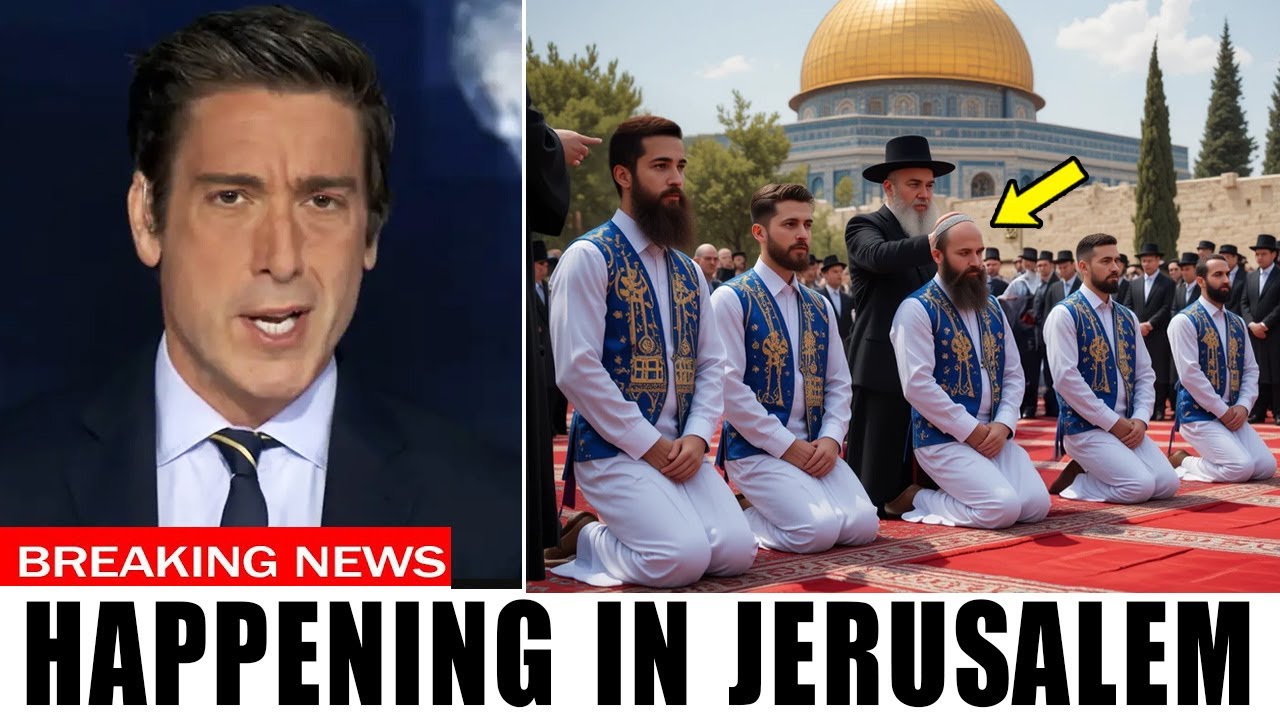
Hidden beneath the hum of the modern city, something ancient is stirring. In the heart of Jerusalem, far from the noise of the headlines, men dressed in white robes gather in silence. By lamplight, they study the Torah. They handle sacred instruments of gold and silver—not as actors in a reenactment, but as priests in training. For the first time in nearly 2,000 years, the rituals of Levitical worship are being revived. While the world seems to spiral into chaos—wars, division, economic collapse—something remarkably ordered is quietly unfolding behind the scenes. This is not disorder. It is preparation. Holy preparation.
Why now? Why here? And why do ancient prophecies appear to be aligning with the events of our day?
In this episode, we uncover the evidence, the prophecy, and the extraordinary preparations underway in Israel. Could this be the final sign before the return of the Messiah? Come with us as we journey back through the visions of the prophets, into the ruins of fallen temples, and forward into a mystery rising again before our eyes.
The Prophetic Blueprint: A Temple Yet to Come
The idea of a future temple is not a fantasy of religious zealots or mystics. It is woven into the very fabric of biblical prophecy. During Israel’s Babylonian exile, the prophet Ezekiel was carried away in a vision to behold a temple unlike anything the world had ever seen. In Ezekiel chapters 40–48, he describes it with stunning precision: measurements, chambers, rituals, and even a river of life flowing from its inner court.
Centuries later, the prophet Daniel spoke of a time when “sacrifice and offering shall cease” and an “abomination of desolation” would defile the sanctuary (Daniel 9:27). The apostle John, exiled on the island of Patmos, was instructed in Revelation 11 to measure the temple of God—a temple that did not yet exist in his day.
Even Jesus himself, standing in Herod’s temple, pointed to the future. He warned of a time when “the abomination of desolation” foretold by Daniel would stand in the holy place (Matthew 24:15). His words were clear: another temple would rise.
Taken together—Ezekiel’s vision, Daniel’s prophecy, John’s revelation, and Jesus’ warning—they all converge on one undeniable truth: before the climax of human history, a literal temple will stand again in Jerusalem, and with it, the restoration of priestly service and animal sacrifices.
But to understand how extraordinary this is, we must first return to the day the temple fell, and with it, the priesthood.
70 AD: The Day Worship Stopped
It was the summer of 70 AD. The Roman general Titus breached Jerusalem’s walls after a devastating siege. The city once called holy was drowned in blood and fire. At its heart stood the magnificent Second Temple, its golden facade gleaming like a crown above the ruins. And then, in a single day, it was gone—burned, destroyed, desecrated.
With its fall, everything changed. The altar was shattered. Sacrifices ceased. The priests—descendants of Aaron—were either killed or driven into exile. It was not merely the destruction of a building. It was a rupture in Israel’s covenantal life.
Without a temple, there could be no sacrifices. Without sacrifices, no atonement. And without atonement, no reconciliation with God under the Law of Moses. The Levitical priesthood, once the beating heart of Israel’s worship, fell silent. Over time, rabbinic Judaism emerged, focusing on Torah study and synagogue prayer. But it was not the same. The ancient system given in Exodus, Leviticus, and Numbers was left incomplete.
With genealogical records scattered and lost, the priesthood seemed gone forever.
And yet… a hope never died. Could the priesthood one day return? Could the ministers of God’s altar serve again?
For nearly two millennia, that hope seemed impossible—until science uncovered what history had buried.
The Priesthood Rediscovered: DNA and the Sons of Aaron
In 1997, a quiet revolution began in genetics—one that would change biblical archaeology forever. Dr. Karl Skorecki, a Jewish medical geneticist, asked a bold question: if all kohanim—Jewish men believed to be descendants of Aaron—shared the same ancestor, could it be proven scientifically?
Together with Dr. Michael Hammer from the University of Arizona, Skorecki analyzed the Y-chromosome, a genetic marker passed virtually unchanged from father to son. They collected samples from kohanim around the world—Ashkenazi from Europe, Sephardi from North Africa and the Middle East.
The results stunned the scientific community: despite centuries of separation, a vast majority of kohanim shared a nearly identical genetic signature—now known as the “Cohen Modal Haplotype.” This marker, remarkably consistent for over 3,000 years, pointed back to a single man—likely Aaron himself.
Peer-reviewed studies in Nature and Human Genetics confirmed it. The priestly line was not lost. It had been hidden, not on scrolls but within DNA itself.
And now, for the first time in centuries, the sons of Aaron could be identified.
From Tradition to Action: The Temple Institute
With the priesthood rediscovered, the preparations began. In 1987, Rabbi Yisrael Ariel—who fought for Jerusalem during the Six-Day War—founded the Temple Institute. Its mission:
- Rebuild the sacred vessels of the temple according to biblical instruction.
- Prepare the priestly garments, including the ephod, golden crown, and breastplate.
- Train the descendants of Aaron for priestly service.
This was not nostalgia. It was restoration.
Today, over 90 temple instruments have been completed—from silver trumpets to the table of showbread. Priestly garments have been woven. The golden crown is ready. Even a provisional high priest has been appointed. Training programs are underway, teaching the kohanim the ancient rituals in exacting detail—how to inspect sacrifices, handle the blood, and recite every blessing word for word.
These are not mere reenactments. They are rehearsals for the real thing.
The Final Piece: The Temple Mount
At the center of it all stands Mount Moriah—the temple mount. It is here that Abraham bound Isaac. Here that Solomon built his temple. Today, it is home to the Dome of the Rock, one of Islam’s holiest sites, and one of the most contested pieces of land on earth.
To many, rebuilding the temple here seems impossible. But some scholars believe the Holy of Holies may have stood just north of the Dome, making it possible for a future temple to be built without disturbing existing Islamic structures. Revelation 11:2 even hints at this possibility, instructing John to “exclude the outer court, for it is given to the Gentiles.”
For now, the temple remains unbuilt. But every other piece is falling into place.
Why It Matters
Why should Christians care? Because the rebuilding of the temple is not just a Jewish hope. It is the countdown clock of prophecy.
Paul spoke of a coming “man of lawlessness” who will sit in the temple of God, declaring himself to be God (2 Thessalonians 2). Jesus warned of the abomination of desolation standing in the holy place. These prophecies require a temple. And now, the priests are trained. The instruments are ready. Even the rare red heifer required for purification has been prepared.
Only one piece is missing: the temple itself.
When it rises, the prophetic clock will begin ticking faster than ever before.
But beyond the warnings lies hope—for after the false Messiah comes the true one. Jesus, the high priest greater than Aaron, will return, cleanse the sanctuary, and establish his kingdom.
The priests are ready. The temple is near. The signs are no longer hidden.
Are you watching?


